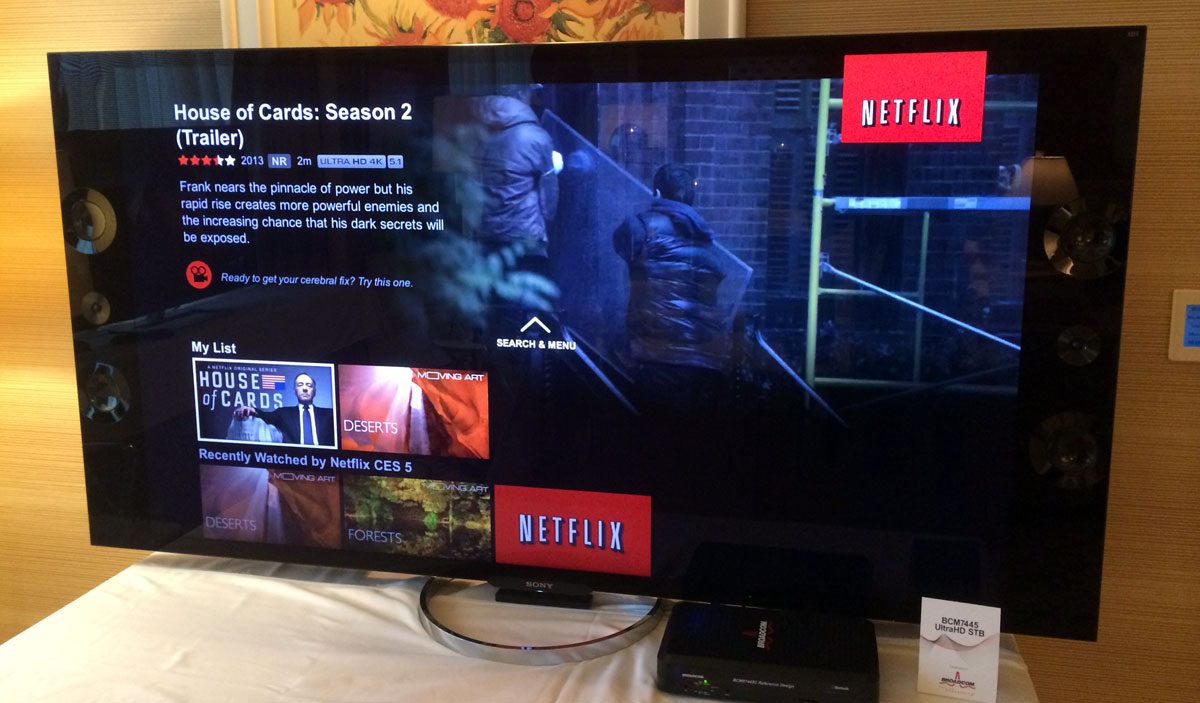

We haven’t included those in here, but if you’re interested in OLED laptops, you’ll find more about them via this link.Īlso, I for one am far more interested in the fast and good-quality QHD panels available these days at either 15 or 17 inches, which we’ll cover in a separate article. There’s a larger selection of laptops also available with 4K 60 Hz OLED screens, also excellent choices for creators, but less so for gaming. When Netflix is streaming at HD (1080p): Test Patterns shows 5800 kbps, 8-bit, 1080p30Hz.
#NETFLIX 4K 120HZ PRO#
For the Blade Pro 17, for instance, the 4K 120 Hz option comes with a $600 premium.ġ7.3″ IPS 4K 120 Hz, matte, MUX and Advanced Optimus Here is what I see when using Netflix's 'Test Patterns' S2:E8 on an Apple TV 4K set to output content at 1080p60Hz SDR (to a Sony A1E 4K TV): When Netflix is streaming at UHD (4K): Test Patterns shows 6960 kbps, 10-bit, 1080p60Hz.

In fact, it’s probably more, as these 4K 120Hz screens are normally only available on the highest-tier configurations and paired with extra RAM and storage.

That’s if you’re willing to pay the hefty price tag, of course, which is roughly several hundred dollars on top of the FHD variants. So while in the past you could only have one or the other: either a fast FHD screen, or a 100% AdobeRGB UHD screen at 60 Hz, now you can have both fast refresh and UHD resolution in a single product. That’s why these 4K screens are not just meant for gaming, but they’re actually excellent tools for creators and professionals that require a color-accurate display in their line of work. All of them are high-gamut, with 100% coverage of the AdobeRGB color space and factory calibration with most configurations, as well as above-average brightness (400-500-nits), contrast, and blacks, but also 120 Hz refresh and fast response times (advertised at 4 ms). Several panel manufacturers make this sort of fast 4K options, available in either 15 or 17-inch sizes. Other OEMs followed up quickly, but the offer for such computers is still limited today. In the case of television refresh rates, "Hz" just means "refresh cycles per second.Razer was among the first to announce a 4K 120Hz screen option for their Blade Pro 17 (which we’ve previously reviewed in the FHD variant over here), while Asus has bragged about it as an option for the ROG Zephyrus GX701 and their StudioBook One workstation in 2019.

What's the difference?įortunately, the difference between 60 Hz and 120 Hz is pretty simple. Stunning 4K Ultra HD picture quality with detailed images Immersive sound quality (Ultra Surround) Stylish design and minimalist two feet stand Award-winning. What do they mean, and why would you need one over the other? Here's the scoop. Or something called "clear motion index" or "clear motion rate" claiming 240, 480, or-mic drop-960 Hz, but make no mistake, every TV on the market in 2019 is either 60 Hz or 120 Hz natively, though they might use " motion smoothing" settings to extrapolate those higher numbers.īut still, you are left with a choice between 60 Hz and 120 Hz. While every TV's panel has a native refresh rate (either 60 or 120 Hz), this spec is one of the most misrepresented where TV tech is concerned-even more so than contrast!įor instance, you might see claims of a 240 Hz refresh rate on TVs. If you're shopping for a new TV, chances are after you figure out everything you need to know about the different brands, price points, and high-level tech specs, you might encounter something called refresh rate, usually described in hertz (Hz).


 0 kommentar(er)
0 kommentar(er)
